
Andy Lloyd's Dark Star Blog

Blog 46 (January 2017)
Zecharia Sitchin and Cuneiform Script
One of the accusations levelled at the late Zecharia Sitchin was that he was not able to read and translate the cuneiform scripts of the Sumerians, Akkadians, Babylonians and other ancient Mesopotamian cultures. There aren't that many people who can read cuneiform, and Sitchin was not a recognised linguistic scholar of ancient languages. As a result, it's easy for scholars to question his ability to read, transliterate and interpret the ancient Mesopotamian writings.

Image credit: Zecharia Sitchin
I came across this issue first-hand in 2003 when appearing in a short university project documentary alongside some noted British Sumerologists and astronomers, discussing Planet X (1). The Sumerologists, curators from the British Museum in London, were sceptical of Sitchin's knowledge of cuneiform, and his expertise with the ancient languages that used this script:
Christopher Walker (Deputy Keeper, Cuneiform Collection
, British Museum): "It’s basically a very subjective interpretation of individual pictures, individual ideas. But he [Sitchin] doesn’t actually sit down and work with the texts. And people think this is a nice idea, this is a nice story, let’s have the next chapter of the story…It’s like Harry Potter." (2)Dr Irving Finkel (Assistant Keeper, Cuneiform Collections
, British Museum): It is very easy to use Sumerian and the Sumerian culture as your explanation for things because hardly anyone in the world can read Sumerian, and if you can give the impression you can read these texts you can say what you like. And I do think this is a factor. The number of people who can read Sumerian reliably and properly you could fit into this room. I think it would be a bit of a squeeze, you would have to move the furniture, but you could get everyone in the world into this room." (2)There's a general disillusionment with experts these days. Sometimes, experts get it horribly wrong: Economists failing to see a looming crash, or bursting of an economic bubble; environmental scientists cooking the books to solidify their stance on climate change; politicians expounding doom and gloom if a particular decision is made, only to see markets lift when it comes to pass. This may be a similar situation.
In order to attain the kinds of authorised credentials that Finkel and Walker require, students of ancient Mesopotamian languages must jump through a number of academic hoops, and then be accepted into the club of recognised scholars of cuneiform script. Like democracy, this may simply be the 'least bad' way of doing things, but it does mean that budding scholars must toe the party line to be accepted into the halls of academe. There is a system of self-perpetuating conformity at work here. Certainly, there is no room in the Sumerology world-view for outsiders who independently master the script and languages, and then propose that the ancient accounts have been incorrectly interpreted this whole time.
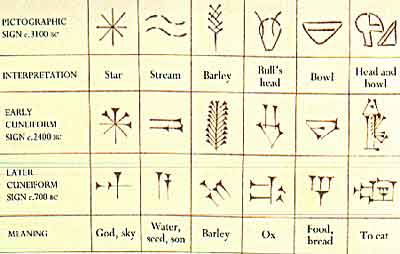
The evolution of cuneiform script from early pictographs
Sitchin's translations, and his interpretations, are fiercely contested - to the point where accusations of fraud has been levelled at him. It is often quoted on the Internet that Sitchin knowingly distorted translations of Sumerian phrases and words to fit his own theory. The translations he presents in his books (3) are sometimes different from authorised texts. These discrepancies provide ammunition for sceptics and scholars alike to dismiss his work, and allege that he knowingly misled his readership. (This situation is not helped by the semi-fictionalised fill-ins he added in to his popular text 'The Lost Book of Enki' (4).) Such accusations have become common currency (5), and even maverick writers looking into ancient mysteries often distance themselves from Sitchin's work.
But are they wrong to be so dismissive? Furthermore, are their accusations of fraud actually libellous?
In 2015, Zecharia Sitchin's niece, Janet Sitchin, published a book containing various articles, letters and book excerpts written by him (6). Having noted on the inside cover jacket that her uncle was "known for his ability to read and interpret ancient Sumerian and Akkadian clay tablets", Janet Sitchin wrote the following in her postscript:
"Sitchin learned to read various types of cuneiform and researched and learned the ancient languages. They were Semitic languages and, as such, he felt they were similar to the Hebrew that was his primary language. It was important for him to read and translate the languages for himself so that the nuance of meaning was not lost by a poor or incomplete translation." (6)
According to members of his own family, then, Zecharia Sitchin really did read and translate the ancient Mesopotamian languages directly from the original cuneiform. Is this so incredible? People teach themselves languages all the time, using any number of resources to master them. Sitchin's problem, then, is that he didn't learn these ancient languages the 'proper' way. He didn't write academic papers, setting his ideas forth in a peer-reviewable format where establishment Sumerologists could unpick his work through standard academic criticism. Instead, he went straight to the masses, without bothering to check with them whether he was right. You can see why they might get a bit miffed.
Image Credit: Andy Lloyd
So, let's say that Sitchin, being a pretty bright bloke (he obtained a degree in economic history from the University of London, and was a journalist and editor in Israel for many years before emigrating to the U.S.) taught himself cuneiform. His translations are personalised, sure, but does that necessarily make them wrong? Translating from any language is a subjective business, after all, and is reliant to some degree upon one's world view. The same argument can be made about academic scholars, whose own paradigms can be deeply rooted and conservative. These experts may not always get it right, because their underlying assumptions about what constitutes Truth may be erroneous. Herd instinct can drive these disciplines, just as it does economics, politics, science. And sometimes, someone needs to come along to stir things up a bit.
Here's an example of how Sitchin is often entirely dismissed for proposing a non-conventional translation:
“You’ll often read, especially in the writings of Zecharia Sitchin, that the annunaki means something like ‘they who from heaven came’ or some other description that makes them sound like aliens or extra-terrestrials. There isn’t a source on the planet by any Sumerian scholar that would agree with that definition. It’s not a difficult term. I personally don’t think that Sitchin knew Sumerian at all because if you’re going to get a term associated with a very group of important deities wrong, I have to wonder what else you’re going to get wrong.” (7)
Sitchin's first d
escription of the Anunnaki in "The 12th Planet", p328, includes the following:"Still, many texts persist in referring to the Anunnaki as "the fifty great princes". A common spelling of their name in Akkadian, An-nun-na-ki, readily yields the meaning "the fifty who went from Heaven to Earth". Is there a way to bridge the seeming contradictions?" (3)
This
simple quote contains both his translation, and also a variation on the 'princes' translation more widely advocated. Sitchin is making it quite clear in his book that he is deviating from the standard translation. His critics argue that he knowingly misled people who know no better. That accusation has stuck. In fact, Sitchin quite carefully and openly offered a choice, setting out why he was proposing something different. He may have been wrong, he may have been right - but he was no fraud.
Written by Andy Lloyd, 2nd January 2017
References:
1) Andy Lloyd "Planet X and 'Waiting for the Apocalypse'" November 2003
2) The Clockwork Team & University of Westminster ‘Waiting for the Apocalypse' 2003
youtube.com/watch?v=vkeBGxlefqY
3) Zecharia Sitchin "The Twelfth Planet" Avon 1976, and the subsequent Earth Chronicles series, by the same publisher as well as Bear & Co.
4) Zecharia Sitchin "The Lost Book of Enki: Memoirs and Prophecies of an Extraterrestrial God" Bear & Co., 2002
5) Ben Guarino "Will the mysterious shadow planet Nibiru obliterate Earth in October? No." 5 January 2017
6) Janet Sitchin (Ed) "The Anunnaki Chronicles: A Zecharia Sitchin Reader" Bear and Co., 2015, p350
7) Ancient Aliens Debunked 'Anunnaki' - quoting critic Michael Heiser,
Radio Bursts from Space
I recently re
They generally don't, of course, which led Sagan to the early logical conclusion that SETI's search with radio telescopes was bound to fail. However, this approach became the only game in town, with serious funding at its disposal, and Sagan fell into line behind it - supporting this doomed search for E.T. radio signals ostensibly from stars within out galactic neighbourhood.
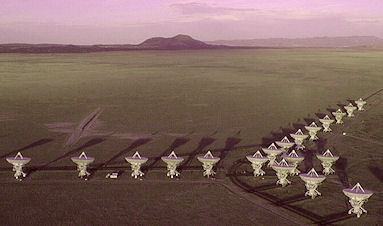
The Very Large Array in New Mexico
Decades on, and SETI has come up with little of any merit. The odd interesting blip, sure, but nothing demonstrably repetitive, or intelligent. Other searches have also come up empty-handed, including an extensive search for highly advanced galactic civilisations using infra-red (3), based upon the theories of the physicist Freeman Dyson. Looking for an infra-red signature from other galaxies seems like a bit of a stretch to me. Sagan's initial premise about radio waves emanating from other distant galaxies is more plausible. By staring at the tiny amount of our sky that any given distant galaxy occupies, radio telescopes can cover a lot of possible stars in a very small space. If any of them contain radio-emitting alien species, shouting for attention, then we should pick them up one would have thought.
Which leads me to news of a scientific breakthrough in pinpointing repeated bursts of radio activity from a distant dwarf galaxy. A determined effort to locate the source of some Fast Radio Bursts, using the Very Large Array in New Mexico, has not only yielded the source (an innocuous little galaxy some 3 billion light years away (4, 5)) but also knocked out some reproducible science:
"In 83 hours of observing time over six months in 2016, the VLA detected nine bursts from FRB 121102. In addition to detecting the bright bursts from FRB 121102, the team's observations also revealed an ongoing, persistent source of weaker radio emission in the same region." (6)
Five more Fast Radio Bursts have been detected by the Green Bank Telescope in 2016, and one with the Arecibo Observatory, bringing the total number of these short, seemingly random emissions from FRB 121102 to seventeen in four years (7). They cover a broad range of radio frequencies. The co-ordinates of FRB 121102 are RA 05h31m55s Dec+33d08m (8) which is in the constellation Auriga near to the 'Flaming Star Nebula' IC 405 (9).
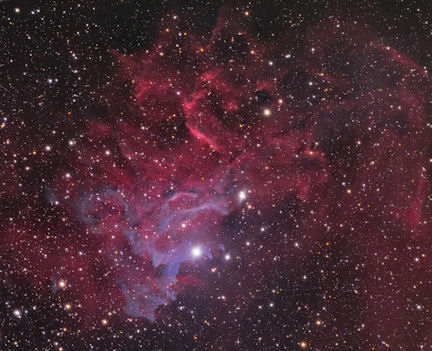
IC 405 - The "Flaming Star Nebula" (7)
This begs the question, why aren't SETI all over this? Isn't this exactly the kind of thing Sagan spoke about? Instead, all of the scientists involved in this research seem desperate to find a natural explanation for this phenomenon - something more complex than Quasars, but not actually intelligent:
"We argue that a burst source associated with a low-luminosity active galactic nucleus or a young neutron star energizing a supernova remnant are the two scenarios for FRB121102 that best match the observed data." (10)
and:
"Although there may be multiple physical origins for the population of fast radio bursts, these repeat bursts with high dispersion measure and variable spectra specifically seen from the direction of FRB 121102 support an origin in a young, highly magnetized, extragalactic neutron star." (11)
It's curious - all those decades searching for strong, repetitive radio signals, and when something turns up which fits the bill, Science - and SETI - get cold feet.
Of course, if this is intelligently-generated radio noise from an advanced civilisation in a distant galaxy, then it was emitted 3 billion years ago, give or take. Presumably, that civilisation is long since gone. But wouldn't it be amazing if something intelligible could eventually be gleaned from this radio twitter, even if the source is now, to paraphrase John Cleese, an ex-extraterrestrial?
A Dark Star Solution?
Let's go back to that nebula in the constellation Auriga. It is interesting to note that the proper motion of the central star of this reflection nebula can be traced back to Orion's Belt (12). It did cross my mind that this nebula might have a Dark Star connection, given my current interest in a nebula shroud wrapped around this proposed outer solar system object (13). A sub-brown dwarf located at a very distant point in the outer solar system, wrapped up in an accreting nebula in interstellar space (14), could indeed have a magenta hue. Magenta is a possible colour along the sub-brown dwarf spectrum.
As tempting a proposition as this might be, there are problems that must be overcome here. For this to be the case, some crazy misidentification would have had to have taken place. The nebula is thought to reside some 1500 light years away. That's on a completely different scale to a nebula-shrouding planet at inner Oort Cloud distances, meaning that calculations of the nebula's distance would be stunningly inaccurate. The Flaming Star Nebula need not necessarily be what I'm looking for.
Let's say, for the sake of argument, that a smaller, darker nebula is indeed cloaking an inner object in that direction, located relatively close to home, and that its detection is complicated by the coincidental presence of IC 405. Let us consider whether a planetary body orbiting this Dark Star object be the source of these FRBs.
Because many of these fast radio bursts occur outside of the galactic plane, they are thought to have an extragalactic source. So, because they're uncommonly bright, these extragalactic distances imply an incredibly energetic source. Now, if the radio source was instead relatively local, the requirement for a massive amount of energy to create these bursts disappears. The bursts are also thought to emerge from, basically, a pinpoint region of the sky, but they are often not easily reproducible. FRB 121102 is an exception to this as further bursts have been detected over the course of several years (8).
Let's speculate that the radio bursts comes from a planet in the Milky Way. Because of FRB 121102's location in Auriga, the planet is not moving around a star located deep in the Milky Way, because it is not located on the galactic plane. Perhaps, then, it is located within our local galactic neighbourhood? Scientists looking at the spectra of radio waves have concluded that the 'dispersion measure' of the radio pulses is too great to have come from a local source. This is because the radio waves appear to have travelled through a significant amount of ionised plasma on their way to us:
"The burst [in this case that of FRB 110523] has a much higher rotation measure than expected for this line of sight through the Milky Way and the intergalactic medium, indicating magnetization in the vicinity of the source itself or within a host galaxy. The pulse was scattered by two distinct plasma screens during propagation, which requires either a dense nebula associated with the source or a location within the central region of its host galaxy." (15).
It's interesting to note that the presence of a dense nebula might create conditions (i.e. an abundant presence of ionised plasma) that could facilitate the dispersion measure effect seen in Fast Radio Pulses. Such a scenario offers a less exciting proposition than a cosmologically mysterious, highly energetic pulse emerging from a distant dwarf galaxy. Perhaps that's why astrophysicists seem to favour the latter over the former.
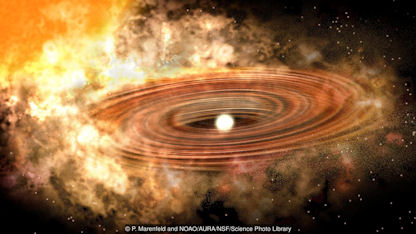
Here's a thought then. If there is a Dark Star in our own solar system, wrapped up in a highly localised, dense nebula of ionised plasma, which shrouds its emission of visible and infra-red light, then that nebula might provide an alternative explanation for the physics described. It might also explain why it's tricky to repeat the science. After all, the bursts would be getting emitted from a planet orbiting the Dark Star. So, like the Galilean moons of Jupiter, the emitting world would be constantly changing its position in the sky, in an oscillating movement. It might even spend time behind the Dark Star itself, as it moves along its orbit, thus experiencing periods of radio silence from our viewpoint.
Again, this is simply speculation on my part. Most (all?) astronomers would have little interest in considering worlds within nebulae, because that's simply not on their radar. But the idea of nebulae getting wrapped around free-floating worlds in interstellar space is central to my way of thinking right now. So, an association between these Dark Stars and enigmatic radio 'signals' from seemingly nowhere does not seem quite as strange as it would to mainstream scientists.
Written by Andy Lloyd, 4th-29th
January 2017
References:
1) Donald Zygutis "The Sagan Conspiracy
: NASA’s Untold Plot to Suppress The People’s Scientist’s Theory of Ancient Aliens" New Page Books, 20172)
Carl Sagan “Direct Contact Among Galactic Civilizations by Relativistic Interstellar Spaceflight” Planetary and Space Science, 15 November 1962, p496, Pergamon Press Ltd3) Lee Billings "Alien Supercivilizations Absent from 100,000 Nearby Galaxies" 17 April 2015
scientificamerican.com article
4) S. Tendulka et al. "The Host Galaxy and Redshift of the Repeating Fast Radio Burst FRB 121102" The Astrophysical Journal Letters, 834: 2, 4 January 2017
5) S. Chatterjee et al. "The direct localization of a fast radio burst and its host" Nature, 4 Jan 2017, DOI: 10.1038/nature20797,
6) Paul Rincon "Mystery cosmic radio bursts pinpointed" 4 January 2016
7) P. Scholz et al. "The Repeating Fast Radio Burst FRB 121101: Multi-Wavelength Observations and Additional Bursts", The Astrophysical Journal, 833:2, 16 December 2016
8) P. Scholz et al. "The Repeating Fast Radio Burst FRB 121101: Multi-Wavelength Observations and Additional Bursts" The Astrophysical Journal, 16th December 2016, 833: 2, plots:
9) Image Credit: Hunter Wilson, SBIG ST-4000XCM 15x15min Imager Temp -20C APM/TMB 130/780 Field Flattener ref.
10) B. Marcote et al. "The Repeating Fast Radio Burst FRB 121102 as Seen on Milliarcsecond Angular Scales" ApJL, 4 January 2017
11) L. Spitler et al. "A repeating fast radio burst" Nature, 531, 202–205, 10 March 2016,
12) IC 405
13) Andy Lloyd "Dust in the Winged" 23 June 2016,
andylloyd.org/darkstarblog39.htm
14) Andy Lloyd "The Cumulative Effect of Intermittent Interstellar Medium Inundation Upon Objects In The Outer Solar System" Feb 2016, DOI: 10.13140/RG.2.1.5112.5526 - an updated version (22/2/16) is available here:
15) Kiyoshi Masui et al. "Dense magnetized plasma associated with a fast radio burst" Nature 528, pp523–525, 24 December 2015
The Galactic Core Spits out Dark Stars
A new theory about planet formation has posited that stars, placed under
inordinate stress, could break apart catastrophically, flinging their
smouldering remains out into the void at tumultuous speeds. It
would take quite a force to render stars apart in this way. The
supermassive black hole which lies at the centre of the galaxy creates
just such an impression. Wayward stars drifting inexorably into
the depths of its immense gravitational well would not fare well, during
what are termed Tidal Disruption Events (1,2).
Researchers from
Harvard University (namely, undergraduate Eden Girma and James
Guillochon, an Einstein fellow at the Harvard-Smithsonian Center for
Astrophysics), have conducted computer simulations to model what happens
to this streaming material, and the results are quite extraordinary: "Every
few thousand years, an unlucky star wanders too close to the black hole
at the center of the Milky Way. The black hole's powerful gravity rips
the star apart, sending a long streamer of gas whipping outward. That
would seem to be the end of the story, but it's not. New
research shows that not only can the gas gather itself into planet-size
objects, but those objects then are flung throughout the galaxy in a
game of cosmic "spitball."" (3) It should be said that the numbers of free-shooting
planets theoretically generated in this way would make up perhaps only
0.1% of the Milky Way's free-floating worlds. Many of the others
are ejected by standard star systems during their chaotic early periods
of planetary formation. This is particularly true of binary star
systems, and other complex stellar arrangements (4). It's likely
that free-floating planets actually outnumber their 'normal' bound
counterparts (5). So, given the extraordinary number of
free-floaters out there in interstellar space, this 0.1% is
still equivalent to hundreds of millions of these cold, gaseous objects
- many of which would be equivalent to the Dark Star class of object I
have written about. Their fate is varied: "Of those newly born objects
about 95 percent were flung from the galaxy out into the outer spiral
arm hinterlands. A much smaller percentage remained bound to Sagittarius
A*, destined to endlessly circle the dark monster that ripped the
original star apart. The smallest set of planetoids, fewer than one
percent of the total, are now wandering the outskirts of the Milky Way,
perhaps within about six hundred light-years of Earth."" (6)
The streams of gas strewn out from the shredded star are capable of
clumping into gas giant-sized planets within just one year. This
contrasts with the millions of years that gas giants generally take to
form, according to current models of planet-formation. So how do
they manage to form so quickly in such a high velocity environment?
I wonder whether this could provide a template for the clumping of
material within interstellar space - interstellar medium is also subject
to a high-velocity environment within galactic streams and currents.
This is an area of research that interests me greatly at the moment, as
I attempt to explain how planets could form in interstellar domains
beyond the heliopause, and perhaps continuing to accumulate materials
around them for billions of years (7).
Recent work has been
carried out by the Hubble Space Telescope as it images the interstellar
space that the two Voyager spacecraft are now traversing beyond the heliopause. The data indicates that the environment beyond
contains zones of 'clumpier' material than expected (8). This
finding, shoring up NASA previous descriptions of 'interstellar fluff'
lurking beyond the heliopause, provides more evidence that accumulation
of interstellar medium can occur in interstellar space; at least
locally. The mechanism for this remains unclear.
In the case of the 'spaghettified'
streams of star matter created by the supermassive black hole
Sagittarius A*, the residual internal gravitational pull of the gaseous
clumps is enough to cause planetary formation within the stream of
matter: "Hydrodynamical simulations
of this process have revealed that within this stream, the local
self-gravity dominates the tidal field of Sgr A*. This residual
self-gravity allows for planetary-mass fragments to form along the
stream that are then shot out into the galaxy at velocities determined
by a spread of binding energies." (9)
If true, then this is quite extraordinary. The monster back hole
at the centre of the galaxy is routinely chewing up stars which get too
close, and spitting out their innards across the galaxy in the form of
bite-sized planetary chunks.
The other aspect of this is that the composition of these high-velocity
second generation planets would vary depending upon what part of any
given star they might have accrued from. This is an important
point, because it lends itself to the possibility of quite exotic Dark
Stars, whose gaseous and chemical signatures could be quite different
from those forming 'naturally' out of stellar nurseries, or from
rotating proto-planetary disks. The sub-stellar properties of such
objects might vary accordingly. Monster dwarf sub-stars?
Written by Andy Lloyd, 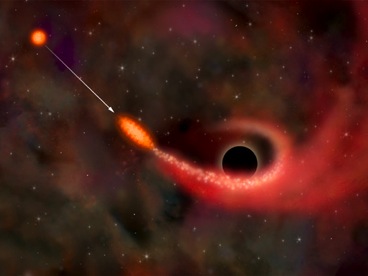
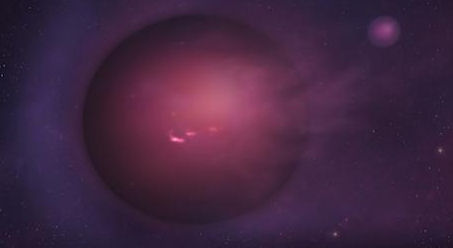
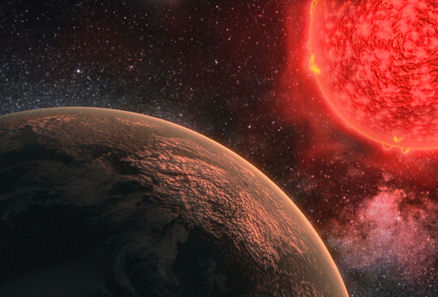
References:
1) Lee Mohon "Tidal Disruption" 21 October 2015
2) Bogdanović, Tamara et al "Tidal Disruption of a Star By a Massive Black Hole: Observational Signature" The Astrophysical Journal, 610: 2, pp. 707-721,
3) Harvard-Smithsonian Center for Astrophysics Press Release 2017-01 "Our Galaxy's Black Hole is Spewing Out Planet-size "Spitballs"" 6 January 2017
4) Ramin Skibba "Binary stars shred up and shove off their newborn planets" 13 January 2017
5) Mike Wall "Lonely Rogue Worlds Surprisingly Outnumber Planets with Suns" 18 May 2011
6) Christine Pulliam "The Milky Way's black hole is spewing out planet-size 'spitballs'" 9 January 2017
7) Andy Lloyd "The Cumulative Effect of Intermittent Interstellar Medium Inundation Upon Objects In The Outer Solar System" Feb 2016, DOI: 10.13140/RG.2.1.5112.5526 - an updated version (22/2/16) is available here:
8) Hubble News Release number: STScI-2017-01 "What will the Voyager Spacecraft Encounter Next? Hubble Helps Provide a Roadmap" 6 January 2017
9) Eden Girma "Modeling the spatial distribution of fragments formed from tidally disrupted stars", Presentation at 229th AAS Meeting, Grapevine, TX, 4 January 2017
astronomy.fas.harvard.edu publication
Recent updates on the Search for Planet Nine
It's
a year since proposed the existence of Planet Nine (1). Despite
the fact that its discovery remains elusive, there have been a great
many academic papers written on the subject, and no shortage of serious
researchers underpinning the theoretical concepts supporting its
existence. Many have sought evidence in the solar system which
indirectly points to the perturbing influence of this mysterious world;
others have provided data which have helped to constrain the parameters
of its orbit (by effectively demonstrating where it could NOT be).
Throughout 2016, I have been highlighting these developments on the Dark
Star Blog.
Image Credit: Caltech/R. Hurt (IPAC)
At the close of 2016, two further papers were
published about Planet Nine. The first of these delves more deeply
into the possibility that Planet Nine (Brown's new name for Planet X,
which seems to have caught on among astronomers keen to distance this
serious search from, well, the mythological planet Nibiru) has a
resonance relationship with some of the objects beyond the
Edgeworth-Kuiper Belt which it is perturbing. These kinds of
resonance relationships are not unusual in planetary orbital dynamics,
so such a suggestion is not that odd, even given the eccentricities of
the bodies involved here. The new research, from the University of
California, Santa Cruz, bolsters the case for this kind of pattern
applying to Planet Nine's orbit: "We extend these
investigations by exploring the suggestion of Malhotra et al. (2016)
(2) that Planet Nine is in small integer ratio
mean-motion resonances (MMRs) with several of the most distant KBOs. We
show that the observed KBO semi-major axes present a set of
commensurabilities with an unseen planet at ~654 AU (P~16,725 yr) that
has a greater than 98% chance of stemming from a sequence of MMRs rather
than from a random distribution." (3) Their randomised 'Monte Carlo' calculations provide a
best fit with a planet of between 6 and 12 Earth masses, whose eccentric
orbit is inclined to the ecliptic by about 30 degrees. They are
unable to point to a specific area of the sky to search, but provide a
broad-brush region which they favour as most probable. Dr
Millholland has also helpfully provided a 3D manipulable 3D figure of
the cluster of extended scattered disk objects allegedly affected by the
purported Planet Nine, alongside their extrapolated orbit for it (4).
The second (now-published) paper, written by Planet
Nine advocates Konstantin Batygin and Dr Mike Brown examines in more
detail their earlier suggestion that a highly inclined subset
of trans-Neptunian objects (TNOs) exhibiting retrograde orbits (namely
Drac, Niku, and 2016 NM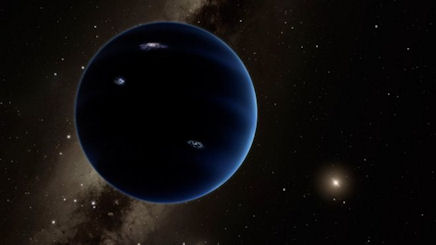

They tested the possibility that the additional presence of Planet Nine can explain the unusual inclinations of Drac, Niku, 2016 NM56, as well as other members of the currently known trans-Neptunian population which are not well accounted for by the Nice model (6). The paper indicates how many of the solar system mysteries could be readily explained by the presence of a substantial Planet X body.
Such an explanation is not without its critics, as I previously described (5): Critics who will really only be satisfied when this elusive planet is actually found. Dr Mike Brown thinks that should be before the end of next winter (i.e. early 2018), given the number of groups now actively seeking this object (7).
Rogue Planet
How this object managed to end up where it is purported to be continues to mystify astrophysicists. Again, during 2016 I covered a great many of the theories put forward for a world whose orbit keeps it well beyond the solar system's generally accepted zone of early planetary construction. Indeed, this has been one of the thorniest issues with the whole concept of 'Planet X', for decades.
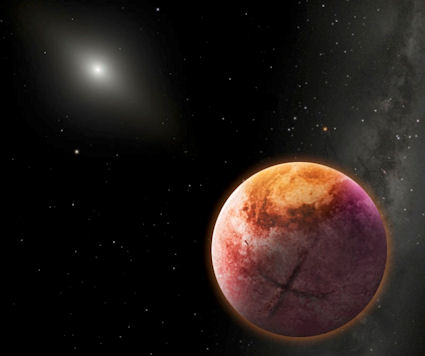
Now, new computer simulations carried out by James Vesper and Paul Mason of New Mexico State University support the idea that Planet Nine is a free-floating, or rogue planet, that was captured by the Sun from interstellar space (8):
"...Their simulations showed that 60 percent of the times a rogue planet encountered our solar system, it came in and then left, sometimes taking another smaller planet with it. In 40 percent of cases, however, the rogue was captured and remained in orbit. The simulations also suggested that if such a rogue was captured, it could orbit the sun at the speculated distance and that it was unlikely that a planet any bigger than Neptune has ever entered our solar system—the orderliness of our system suggests it has not been disturbed since the period when the solar system was created." (9).
One might argue that with these computer simulations you tend to get out what you put in. Nonetheless, these support the capture scenario, and potentially align the proposed Planet Nine ever closer to Zecharia Sitchin's mythological Nibiru/Marduk Planet X. Why? Because his books not only describe a Planet X body of about 10 Earth masses in an elliptical orbit inclined 30 degrees to the ecliptic (as per Planet Nine) but also pinpoint its origin as being just such a rogue planet captured by the Sun from interstellar space (10).
There remain two stark differences: The first is that Planet Nine is thought to remain well beyond the heliopause for the entire duration of its eccentric orbit. This contrasts with Nibiru's asteroid belt-skimming perihelion passage (but these days, with a known second asteroid belt in the form of the distant Kuiper Belt beyond Neptune, one could imagine a slightly different reading of the Babylonian 'hammered bracelet' from Enuma Elish?). The second is that Planet Nine's projected orbital period is 10 - 20,000 years, contrasting with Sitchin's 3,600 years.
Still, enough similarities to make any number of scientists feel acutely uncomfortable - if not a little irritated.
Written by Andy Lloyd,
6-15th January 2017
References:
1)
Konstantin Batygin & Michael Brown "Evidence for a Distant Giant Planet in the Solar System" The Astronomical Journal, 151:2, 20 January 2016,2) Renu Malhotra, Kathryn Volk, & Xianyu Wang "Corralling a Distant Planet with Extreme Resonant Kuiper Belt Objects," The Astrophysical Journal, 824: (2)L22 2016,
arizona.openrepository.com article
3) Sarah Millholland & Gregory Laughlin "Constraints on Planet Nine's Orbit and Sky Position within a Framework of Mean Motion Resonances" 22 December 2016
4) Sarah Millholland "Planet Nine's Orbit in Space"
smillholland.github.io/P9_Orbit/
5) Andy Lloyd "Niku, Drac and L91 Perturbed by Planet Nine...or Something Else?" 18 October 2016
andylloyd.org/darkstarblog43.htm
6) Konstantin Batygin & Michael Brown "Generation of Highly Inclined Trans-Neptunian Objects by Planet Nine" The Astrophysical Journal Letters, 10 December 2016, 833:L3 (5pp)
7) Mike Wall "'Planet Nine' Can't Hide Much Longer, Scientists Say" 20 October 2016
8) James Vesper & Paul Mason "Simulation of Rogue Planet Encounters with the Solar System: Is Planet 9 a Captured Rogue?", American Astronomical Society, AAS Meeting #229, id.424.05, January 2017,
9) Bob Yirka "Simulations suggest Planet Nine may have been a rogue" 12 January 2017
10) Zecharia Sitchin "The Twelfth Planet" Avon 1976, and the subsequent Earth Chronicles series, by the same publisher as well as Bear & Co.
The Red Star of Ruin
I was recently sent an excerpt from some ancient Irish Celtic folktales about Deirdre of Ulster. Deirdre was a woman of legendary beauty who occupied a tragic position in the old Celtic pagan mythology, similar to that of Helen of Troy. There are other connections with Near East paganism to explore here, too, in the form of Bel or Baal. From her birth, prophecies were told that the beautiful Deirdre would be the cause of great strife and war.

Deidre
In this context, my friend Mickey noticed in his reading of the old poem that Deirdre was likened to a 'red star of ruin':
"O Deirdre, terrible child,
For thee, red star of our ruin,
Great weeping shall be in Eri-
Woe, woe, and a breach in Ulla."
Druid song of Cathvah" (1)
Where does the concept of this portent come from? Comets were often associated with catastrophe in ancient times, but not red stars. Perhaps it denoted the planet Mars, with its long-held association with gods of war? That would be within context. However, the translation is specifically a star, rather than a planet or 'wandering star'. Perhaps they are denoting the prominent Taurean red star Aldebaran, which has been associated by some with the ancient Celtic festival of Beltaine (2).
Whether this association with Aldebaran is correct or not (and I suspect it isn't), the connection with Beltaine itself is interesting because its meaning is 'the two fires of Bile'. The festival marks the end of winter, and a ritual of purification which takes place between two fires. If we have a red star as one of these 'fires', then might we assume that the Sun is the other?

Beltaine
The origin of
the Celtic
people of
Ireland is
linked to waves
of migration
from both
central Europe,
and also from
Northern Spain,
during the Stone
Age (3).
Nowadays, we
know that there
was a far
greater
inter-connectivity
between ancient
peoples than
many once
assumed, and a
Gnostic-like
sharing of ideas
across cultures.
Even so, the
origins of the
Druids remains
somewhat
mysterious - our
only real
historical
sources coming
from the
conquering
Romans.
But associations
have often been
made with the
Phoenicians,
whose wanderlust
took them far
and wide.
It is little
wonder, then,
that the Druid
god Bel has been
associated with
the ancient
near-Eastern
fire god Baal
(4).
Indeed, the
fires that were
(are?)
traditionally
lit upon Irish
hills on
Midsummer's Eve
were known as
the Baal Fires,
as ancient pagan
Sun-worship
ritual (5).
Again, not too
much of a
stretch to
consider how the
festival of Beltaine, with
its two fires,
may in some way
be denoting
something of
great
significance
from ancient
mythology,
stemming from
the ancient
lands of
Mesopotamia.

The Palmyrene Trinity of Aglibol Baal, Shamene Baal and Shamene Malakbel c.250AD
I've come across Baal before in my researches. Baal initially meant simply 'Lord' in Semitic languages of the north-western Levant, before being applied to deities of various descriptions. Baal was worshipped across the Levant region, particularly by the Canaanites and the Phoenicians. Of particular interest to this discussion is a Palymyrene stela showing the trinity of Baal deities: Aglibol Baal, Shamene Baal and Shamene Malakbel clad in Roman armour from around 250AD. Tragically, the temple of Baal Shamin in the ancient Syrian city of Palmyra, was destroyed by the so-called Islamic State/ISIS in 2015. This trinity of Palmyrene deities were Babylonian in origin:
"Before the arrival of Christianity in the second century, Palmyra worshipped the trinity of the Babylonian god Bel, Yarhibol (the sun) and Aglibol (the moon)." (6)
The images have clear celestial symbolism. The Moon and Sun gods are easy enough to make out. It's the third, central deity, Shamene Baal, whose celestial identity is less easy to determine. It seems to me to take on some of the Winged Disk symbolism. If so, then this is clearly an entirely separate celestial object to the Sun symbol stood next to Shamene Baal. So, perhaps this Baal trinity is where the idea of the two fires, under the moonlight, comes from in the first place? Maybe this is where the pagan Beltaine festival stems from. In which case, there is a need to identify this mysterious second celestial object and, from my perspective, the most likely candidate is the Sun's binary companion; a sub-brown dwarf 'Dark Star'.
Coming back to the Irish folktales about Deirdre, there is more from the poem about her that interests me in this regard; particularly the conflict with the usurper Red King of Alba (7). Given the self-evident adoption of Baal-worship in ancient Ireland, it is not unreasonable to conclude that these folkloric stories could contain elements of more ancient myths: In particular, those myths which extended across Europe with the migration of the Celts, but have their origins in the Levant region, and ancient Mesopotamia before that. As such, I am tempted to draw a parallel here with the Babylonian creation myth Enuma Elish, and the Celestial Battle between the watery monster Tiamat (the Earth) and the powerful usurper god Marduk (Planet X/Nibiru), as described by Zecharia Sitchin (8).
I would also note that early in Deidre's life, there is an event where a Druidical staff is broken in two over water, combined with a prophecy of a coming conqueror:
"Then Deirdre, an impetuous child, seized the druidical staff from the hand of Cathbad, broke it in two, and flung the pieces far out on the water. "Ah, Cathbad!" she cried, "there shall come One in the dim future for whom all your Druid spells and charms are naught."" (9)
This has similarities to the breaking in two of Tiamat by Marduk - although, if this is the case, then it is a highly distorted 'account'. Sadly, Deirdre's eventual fate is to throw herself from a chariot to be crushed against rocks. Again, perhaps an allusion to cosmic catastrophism.
Lisa Cooper, who runs an excellent group on Facebook, wondered whether Deidre might represent Mars (10)? This analogy would explain the colour most associated with Deidre: 'Saffron'. According to Sitchin, Mars was witness to a catastrophe early on in its life. The breaking of the staff over water, along with the appearance of the red star of ruin, represents the cataclysmic Celestial Battle which took place at the asteroid belt location (8).
Deidre's own tragic fate later, by falling against rocks, might then represent whatever whacked Mars to knock the stuffing out of it, causing it to appear now as a 'dead' world. So often associated with warlike male deities, it's a refreshing change to consider a female characterisation for Mars - particularly in its prior form as a beautiful world before catastrophe struck.
It's interesting to see how these old myths swirl around each other. Perhaps they have some common origins in cosmic events that took place long, long ago - and which have come down to us through oral tradition from as far back as the last Ice Age. Or perhaps they're just stories. We'll not know for sure, until we discover the 'Red Star of Ruin' itself. We may not have that long to wait.
Written by Andy Lloyd,
26-30th January 2017
References:
1)
Ruth Kelley "The Book of Hallowe'en" Norwood Press, USA, 1919 with thanks to Mickey N.2) Ireland's Druid School "Celtic Druid's Beltine"
3) Marie McKeown "DNA shows Irish people have more complex origins than previously thought" 5 July 2013
4) Moe "The Phoenicians – Celtic Druid and Arab Bedouin Connection" Gnostic Warrior, 20 April 2013
5) Internet Sacred Text Archive "Midsummer: The Baal Fires and Dances"
6) Agence France-Presse "Isis 'blows up temple dating back to 17AD' in Palmyra" 24 August 2015
7) Anthony Brogan The Pagan Bards of the Gael" The Notre Dame Scholastic, Vol. XXXV, No. 3, p42-5, 28th September 1901,
8) Zecharia Sitchin "The Twelfth Planet" Avon 1976, and the subsequent Earth Chronicles series, by the same publisher as well as Bear & Co.
9) Jeanie Lang "Books of Myth: Deirdre"
10) Correspondence from Lisa Cooper, 29/21/17, "The Eye on Sacred Knowledge"
facebook.com/groups/213943162322311/
Meteors from Without?
A Swedish geologist has discovered a family of meteorites, which fell to
Earth some 470 million years ago, which bear little or no resemblance to
those we are accustomed to being struck by in contemporary times.
Professor Birger Schmitz, of Lund
University, argues that this discovery could have a significant
impact upon our understanding of the history of the solar system (1).
It has long been assumed that the solar system's inherent stability
would be associated with a uniform variety of meteors - fragments of
broken up comets and asteroids, or impact residues from minor bodies
within the solar system, etc. In other words, home-grown materials
from our solar system chipped away over time, but which share common
features, and whose generation is a relatively constant process within
the solar system, presenting the earth (and other solar system bodies)
with a relatively consistent impact footprint over time. Now, it
appears, that assumption was wrong. Instead, there seems to have
been substantial variation over long time scales:
"Our data show that the meteorite flux has
varied over geological time as asteroid disruptions create new fragment
populations that then slowly fade away from collisional and dynamical
evolution. The current flux favours disruption events that are larger,
younger and/or highly efficient at delivering material to Earth."
(2)
The reason for this change of thinking was the discovery of the
meteorite Österplana 065 in Sweden, which has been
termed a 'meteorite dinosaur' by Dr Schmitz. Since then, an
additional 43 micrometeorites have been added to this anomalous family,
begging the question: Where did they come from? They are
quite unlike what we see in more modern meteorites. It may be that
they represent the materials flung out from collisions taking place
between particular bodies within the solar system, whose compositional
signatures are different from those whose more modern impacts populated
the current range of meteorite fragments.
Or, on the other hand,
the unusual compositional signatures might indicate the presence of
fragmented cometary materials, originating from interstellar space,
which crossed into the solar system half a billion years ago.
Either way, it is now apparent that the previous concept of a meteoritic
uniformity across the timescale of the solar system is wrong. This
may allow scientists (both geologists and planetary scientists) to
differentiate between various cosmic events, and their collisional
aftermath, during the lifetime of the solar system.
Written by Andy Lloyd, 26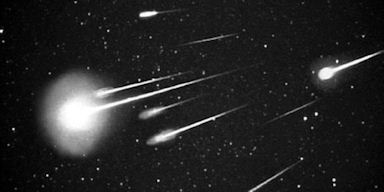
References:
1)
Daily Galaxy "Mystery Meteorites Hit Earth 470 Million Years Ago --"Something So Far Unknown About Our Solar System"" 24 January 20162) Phillip Heck et al. "Rare meteorites common in the Ordovician period" Nature Astronomy 1, 0035, 23 January 2017
Dr. Dyomin Damir Zakharovich
The modern media is a fractured, messy construct. It's becoming increasingly difficult to differentiate between outlets as to which is reliable, and which is not. Small media groups can put out stories, which have been subject to very little journalistic or editorial analysis, and see them get picked up, no questions asked, by major news outlets online. As a result, mainstream tabloid outlets increasingly propagate nonsense and fake news. This is now leading to a serious debate about what is Truth, or at least fact-based information, and who should we listen to. The danger is that the governments will start to censure non-verifiable news outlets, which is scary in the case of niche or specialist fields of study where the mainstream journalistic input is often overly simplistic, or even ignorant of context and factual information.

Dr Dyomin Damir Zakharovich
A recent news story about Planet X/Nibiru has gone viral. At the centre of the story is NASA's observation of an inbound Near Earth Object 2016 WF9, which they say will skim harmlessly past the Earth in late February.
"2016 WF9 will approach Earth's orbit on Feb. 25, 2017. At a distance of nearly 32 million miles (51 million kilometers) from Earth, this pass will not bring it particularly close. The trajectory of 2016 WF9 is well understood, and the object is not a threat to Earth for the foreseeable future." (1)
A Russian named Dr Dyomin Damir Zakharovich has been issuing some dire warnings about this event, and has linked the provenance of this object with Planet X/Nibiru and a brown dwarf system in the outer solar system (e.g. 2).
I wanted to find out more about Dr Zakharovich, and to find out where his data is coming from. I assumed he was a professional astronomer, although the many media reports I examined about this story described him as a 'self-proclaimed astronomer' or variation on that theme. I went through 10 pages of Google searches to find something about his background, but found nothing tangible about him. He pitches up in an article or two from 2016, including an appearance in the German media. Apart from that, nothing at all. If he had any kind of academic profile, that surely would have turned up.
So then I put in the Cyrillic translation
of his name ( Д-р Дамир Демин Захарович ) to see if any Russian
universities or institutions showed up, in Russian language websites.
I expected to find, at the very least, an academic entry for his PhD,
given his moniker as a doctor. Google normally picks up a publication
or two for anyone with an academic history, and their university
profile webpage. It will usually emerge early on in the search
history, because the profile page, or published papers, are
long-standing documents on the Internet, provided by reliable sources.
Again, all I could find were the same series of recent, re-hashed articles from across the Russian media. I can only conclude that Dr Dyomin Damir Zakharovich has no data worth examining. He does not appear to be a professional astronomer. Until I can verify more details (and I'd be interested to hear of any facts that readers can provide about his work) I'm going to assume this is fake news.
There's another issue here; about sensationalism. It's a problem I've personally grappled with for a long time. My writing is heavily science-based, but is, at the same time, often challenging and speculative. I try hard to indicate where something I say is conjectural, and to give the other side of the argument. I also try to get back to the root of each story I read about, and build from the source (usually academic papers, books or other published materials). That can be constraining (and definitely time-consuming!) but it is a necessary series of measures to ensure I provide material that is accountable, and bearing some journalistic and scientific integrity. I'm not saying I'm always perfect here, but I try.
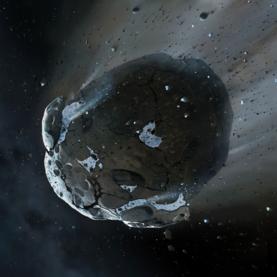
The problem for me as a writer has always been that this is not exciting. It does not sell books. It does not give me access to large conferences as a speaker. It does not provide the world with bite-sized chunks of wild information that goes viral over the Internet. The temptation is always there, of course, to cross that line. I watched with fascination how this apocalyptic speculation provided by Dr Dyomin Damir Zakharovich has been subject a media feeding frenzy across the world. Wow! The right story at the right time? More Russian media churning, for dark reasons unknown? I don't know. But in this post-fact world, I feel that my way of doing things, my integrity as a scientific thinker and writer, is rapidly losing ground. Worse, if a programme of censorship really does happen in the years to come, my small websites might themselves be under threat - even though it's the big media outlets that are often guilty of propagating the extreme stuff just to get lots of hits, and thus advertising revenue. The whole thing is a mess.
As for 2016 WF9... personally, I'm not worried one little bit. On the face of it, at least, it does not appear to be connected to Planet X.
Written by Andy Lloyd, 30th January 2017
References:
1)
NASA/JPL "NASA's NEOWISE Mission Spies One Comet, Maybe Two" 29 December 20162) Abigail Beale "A doomsday asteroid will hit Earth next month and trigger devastating mega-tsunamis, claims conspiracy theorist" 26 January 2017

You can keep informed of updates by following me on Twitter:
![]()
Or like my Facebook Page: https://www.facebook.com/darkstarandylloyd